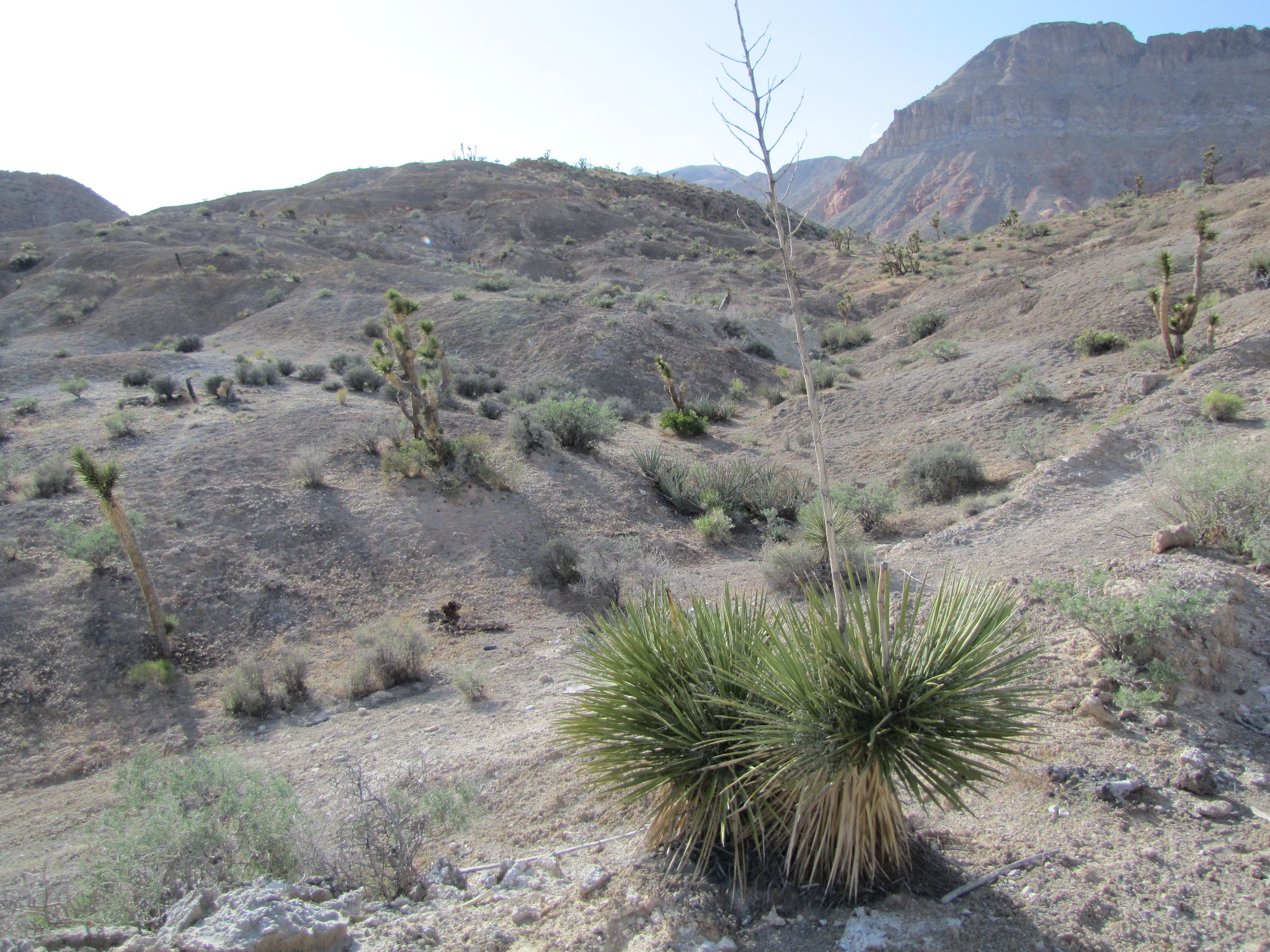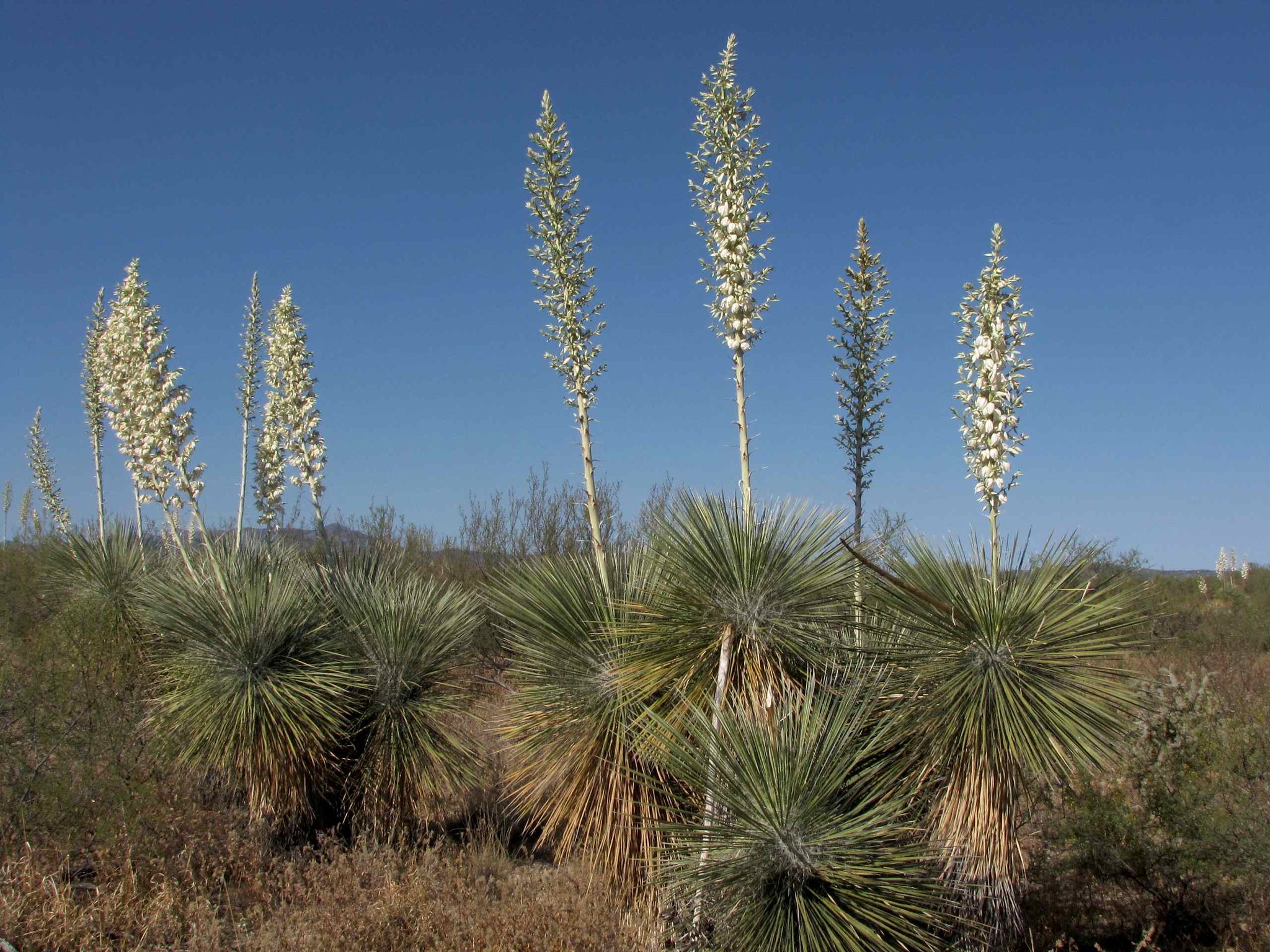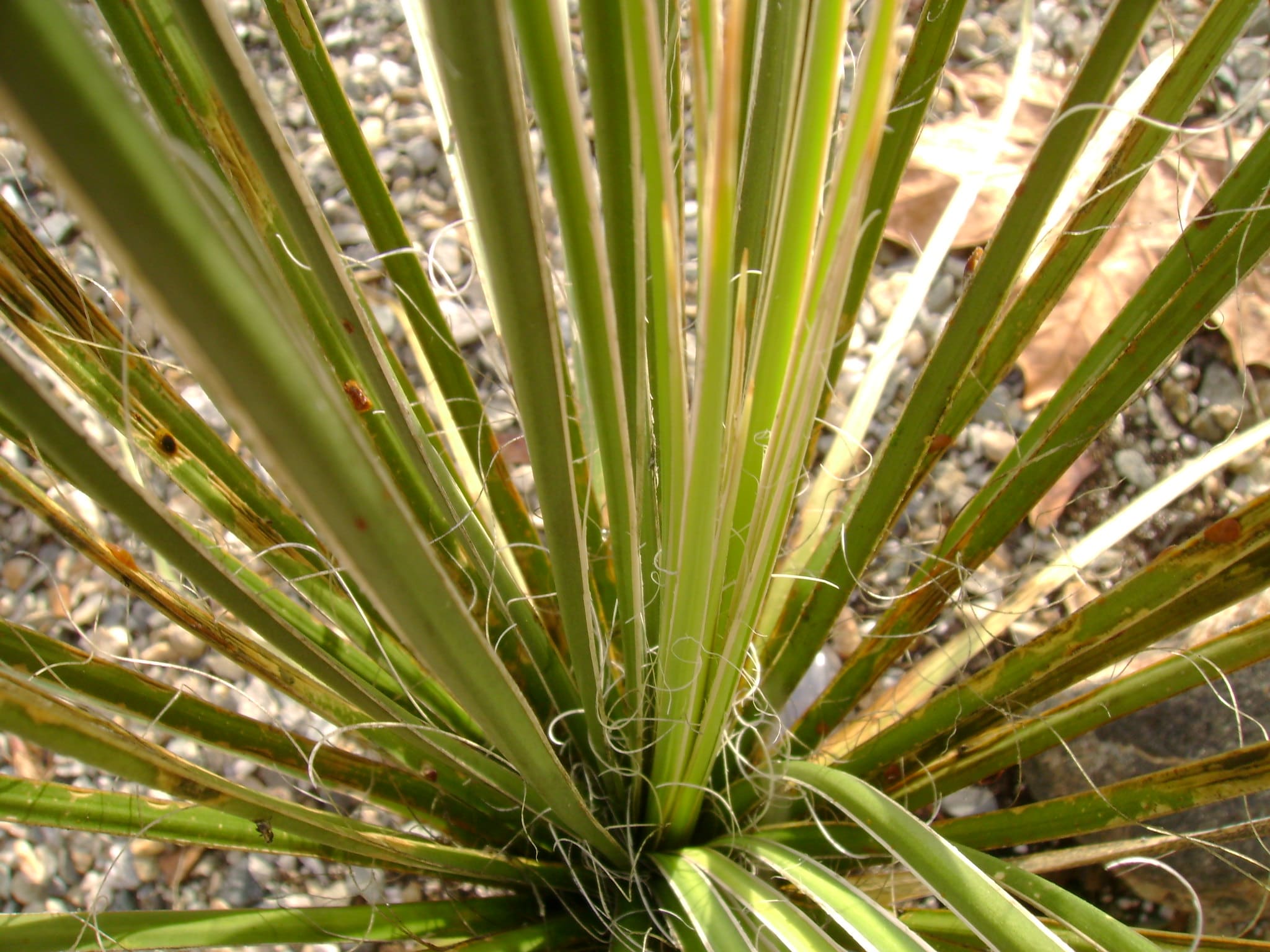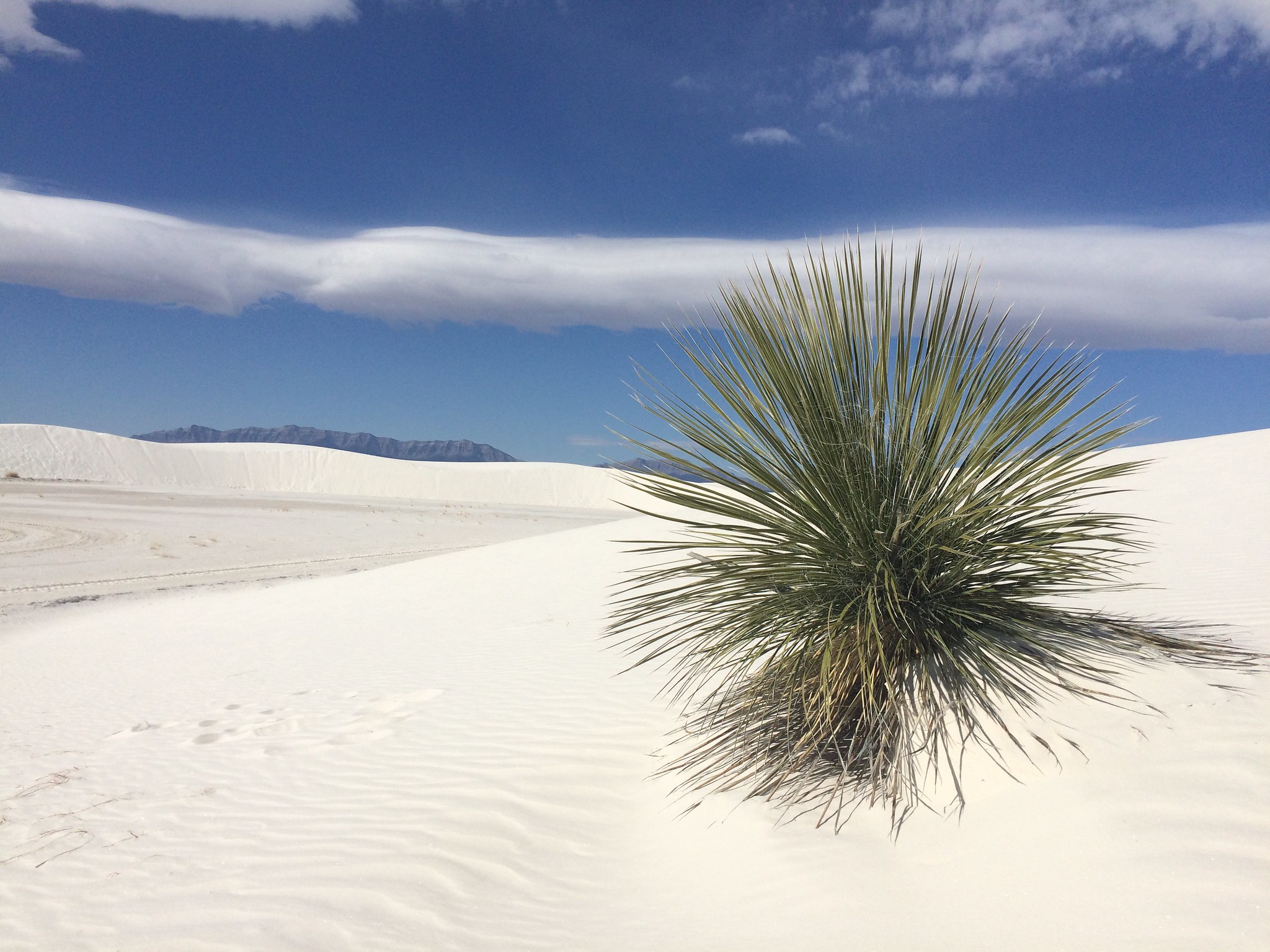
Image - Flickr / Bryant Olsen
Do you live in an area where it is very hot and there are droughts every year? Then let me introduce you to the yucca elata, a relatively small plant but that will not need you to be very aware of it.
It resists drought well, and only grows in conditions if it is exposed to the star king since it is young. The only drawback is that its growth is a bit slow, but since it is also adapted to live well in pots, can be had on terraces or balconies.
Origin and characteristics of yucca elata

Image - Flickr / Lon & Queta
It is a perennial plant native to southwestern North America; specifically, it is a native of the Sonoran Desert and the Chihuahuan Desert. It is popularly known as soap yucca, although its scientific name is yucca elata, and belongs to the genus Yucca. It has a single trunk that branches a few centimeters from the ground, and reaches between 1 and 5 meters in height.
The leaves are arranged in a very dense spiral assembly, and they measure from 25 to 95 centimeters long by 0,2 to 1,3 centimeters wide. The flowers are white and bell-shaped. These sprout in spring-summer from clusters that emerge from the center of the leaves. If they are pollinated by pollinating insects, we can see capsule fruits of about 4-8 centimeters long by 2-4 centimeters wide, inside which will be the black seeds.
There are three subspecies:
- Yucca elata subsp. elata: the leaves measure between 30 and 95 centimeters.
- Yucca elata subsp. verdiensis: the leaves measure between 25 and 45 centimeters. It is typical of Arizona.
- Yucca elata subsp. utahensis: Native to Utah. Now it is also known as yucca utahensis. It can reach 3 meters in height, but due to the conditions in which it lives (extreme heat and prolonged droughts) it does not usually exceed one meter.
How is it to be cared for?
La yucca elata It is a plant that is resistant to the lack of water, but precisely for that reason it can be complicated at times. Therefore, it is time to find out what care to take:
Climate
This is a species typical of the hottest and driest deserts in all of America; in fact, the one in Sonora is one of the most hostile in the world, if not the most. Temperatures can rise so much that they reach 45, and up to 50 degrees Celsius. At night it can go down at certain points, reaching -7ºC.
Therefore, the yucca elata it is a plant that is well adapted to living in a wide variety of climates. And that is also why, we think, that it should be taken into account even more when designing gardens in regions such as the Mediterranean, or those with a dry subtropical climate.
Location
It has to be taken out, whether in the garden, on a patio, terrace or balcony, and always in a sunny area. Inside the house it will lack light, so that its growth will be less and less until it ends up weakening and dying.
As it is relatively small and its roots cannot cause damage, it is interesting to plant it near walls or walls.
Earth
- Garden: the garden soil must have excellent drainage; therefore, the earth must be sandy, light. When it rains or the plant is watered, it must be able to absorb the water quickly. If not, then you will have to make a hole and mix the earth with perlite in equal parts, or even fill it with pumice or similar.
- Flower pot: use pumice, or black peat mixed with pearlite or quartz sand in equal parts.
Irrigation

Image - Flickr / edible_plum
Watering frequency will be low. In summer you may need one, maybe two waterings a week, but the rest of the year it will only be watered when the substrate or soil is dry.
If you have it on the ground and in your area it rains from time to time (or very occasionally), from the second year it will not be necessary to water it.
Subscriber
It is highly advisable to pay the yucca elata with a compost like guano or worm castings in spring and summer. Some alternatives are fertilizers for succulents (cacti and succulents), since although it is not a succulent, it does share a habitat with some species of cacti.
Multiplication
It multiplies by seeds and semi-woody cuttings in spring-summer.
- Seeds: you have to sow them in pots or seedling trays with a substrate composed of black peat and perlite in equal parts, being careful not to bury them too much. Then, put the seedling in the sun and water regularly. They will germinate in about 20 days.
- CuttingsYou have to cut a branch and let the wound dry for a day or two. After that time, plant it in a pot with pumice, quartz sand or similar.
Planting time
La spring It will be the time when it is planted in the garden, or the pot is changed.
Rusticity
Resists up to -7ºC.
What uses does the yucca elata?

Image - Flickr / Caleb Slemmons
It has a very high ornamental value, so much so that can be grown in gardens (as in rockeries, for example), but also in pots. In addition, in their places of origin the soapy substance that is inside its trunk is used to make soap and shampoo.
Did you like the yucca elata?